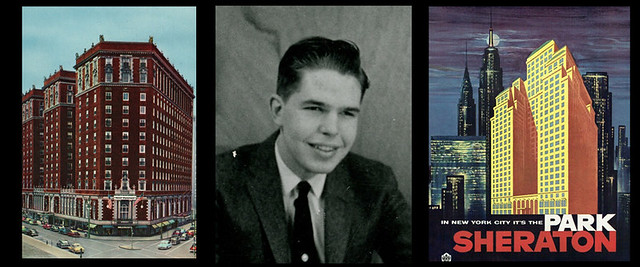
PREV ARTICLE
NEXT ARTICLE
FULL ISSUE
PREV FULL ISSUE
MY FIRST COIN CONVENTION BY Q. DAVID BOWERSDave Bowers has been working on his autobiography, and this week he published a Stack's Bowers blog article on his first coin convention. -Editor
 With George Williams I went to an Empire State Numismatic Association (ESNA) convention in Syracuse, New York, in 1954. It was my first regional coin show. By that time I had been a regular attendee at the Wilkes-Barre (Pennsylvania) Coin Club, but had not ventured beyond that. George, a collector of the old school, lived in Kingston, Pennsylvania, adjacent to my home town of Forty Fort. He had been collecting for many years. When I met him he mentioned that Joseph Stack from New York City had come through the area on a buying trip and had offered him the irresistible price of $200 for his Proof 1895 Morgan dollar, and he sold it. (Today the same coin would be worth on the long side of $50,000!). George helped me form a library, answered my endless questions, and each month took me to coin club meetings. The ESNA show was set up in the lobby of the Syracuse Hotel, with a couple dozen or so dealer tables amidst furniture and with, perhaps, 50 other people buying, selling, and talking about coins. George knew everybody, and I was introduced to Jonah Shapiro, John Jay Pittman, Charles and Arline French, Gaston DiBello, Dr. Kenneth Sartoris, Jacob Cheris, Dr. Fiori F. Pepito, Al Gullian, Kenneth Fuller, Dave Nethaway, Dr. Jasper Robertson, and the other luminaries of Upstate New York coin collecting. I also met Charles W. Foster, who was nicknamed “Suitcase” Foster, as he carried his inventory that way. He hailed from Rushville, New York, and had been in the hobby for many years. He took a liking to me, and we chatted at length. I reviewed his coins and wrote a check for a nice stock of Uncirculated large cents of the 1816 to 1820 years (which I would later learn were from the Randall Hoard), several prooflike 1795 Talbot, Allum & Lee cents, and a few other things. Even before my dealer discount I thought his prices were wholesale—and if I had been able to, I would have spent much more. I saw him a couple of times after then, and also bought coins from him by mail. He was pointed out by others as being a paragon of professional integrity. Foster died in December 1959, far too soon. Today in 2019 few people remember him. By that time I had learned that legitimate dealers could be divided into two main classes. The first and most common were those who were in it for the money—no pun intended—and bought and sold coins strictly as a business. They could just have easily been selling watches or sacks of potatoes. As a kid I would be brushed off quickly by them, unless I showed interest in something expensive. The second category of dealers embraced Jim Ruddy, “Suitcase” Foster, John J. Ford, Jr., Harvey and Morton Stack, Maurice Gould and Frank Washburn of the Copley Coin Co., and a few others: they loved coins and their history and really enjoyed sharing information with other “coin people.” Just talking about numismatics was enjoyable and an important part of their lives. After the NENA show I attended several others, the most important being the Metropolitan New York convention held in the Park Sheraton Hotel a short walk from Stack’s. I was an eager buyer and an enthusiastic seller. By that time I had several hundred customers who bought from me by mail. Most became friends and remained with me for many years. Armed with information I had learned from books on colonial coins, patterns, and other things I made a lot of unearned, so to speak, profits at coin shows by purchasing coins from dealers who did not realize they had rare varieties. This was fair and square, as I paid the prices asked, less a dealer’s discount, and the sellers were quite happy. Indeed, for colonial and early American coins they were usually delighted, for they had very few customers for these; the specialty was not popular at the time. On the other hand, if a collector showed me a coin and asked me to make an offer, I would quote a price reflecting the rarity of the variety even if the owner was not aware of it. I tried to treat others as I would like to be treated by them. This philosophy, still in effect, has worked well over the years. To read the complete article, see:

Wayne Homren, Editor The Numismatic Bibliomania Society is a non-profit organization promoting numismatic literature. See our web site at coinbooks.org. To submit items for publication in The E-Sylum, write to the Editor at this address: whomren@gmail.com To subscribe go to: https://my.binhost.com/lists/listinfo/esylum All Rights Reserved. NBS Home Page Contact the NBS webmaster 
|